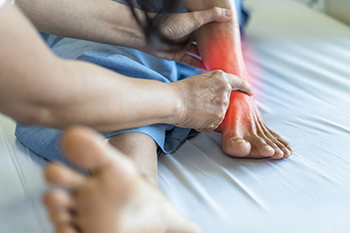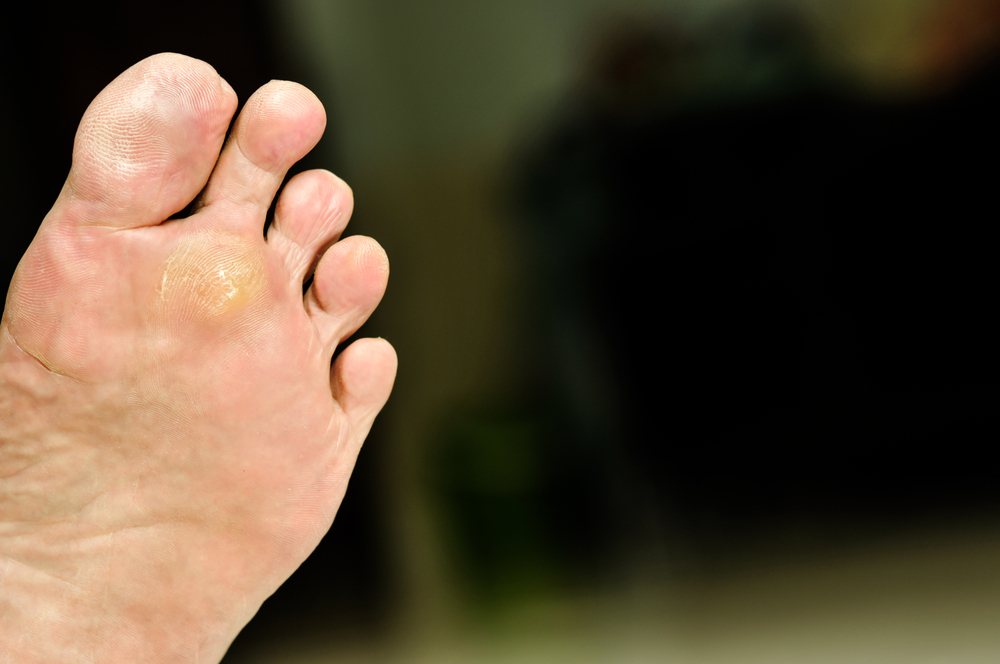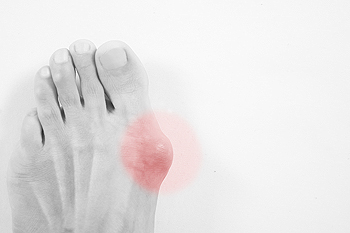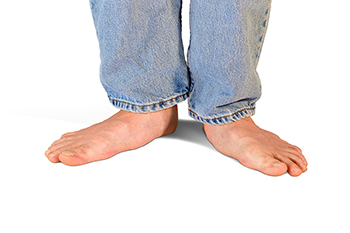Connect With Us
Blog
Items filtered by date: August 2022
Tendonitis in the Foot and Ankle

Tendons are thick bands of tissue that connect muscles to bones. The feet and ankles have a large number of tendons, any of which can become inflamed, a condition known as tendonitis. The main cause of tendonitis is overuse from repetitive movement. For that reason tendonitis is especially common to runners, because if a tendon is made to work too hard or too long it can develop tears. Other causes of foot and ankle tendonitis include an abnormal foot structure like flat feet or high arches, an injury, or a medical condition, such as gout or rheumatoid arthritis. The primary symptom of tendonitis in the foot or ankle is sharp, burning pain, often followed by swelling and stiffness. In many cases, tendonitis can be treated successfully, though the recovery period may take weeks, or even months. The first way to begin the process is to rest the painful area and cease the activity that caused it. If pain continues, or worsens, it is a good idea to visit a podiatrist for a thorough exam. The doctor may prescribe a variety of treatment options to ease the inflammation, including medication, orthotics, and exercises.
Foot and ankle trauma is common among athletes and the elderly. If you have concerns that you may have experienced trauma to the foot and ankle, consult with Dr. Thong V. Truong from California. Our doctor will assess your condition and provide you with quality foot and ankle treatment.
Foot and ankle trauma cover a range of injuries all over the foot; common injuries include:
- Broken bones
- Muscle strains
- Injuries to the tendons and ligaments
- Stress fractures
Symptoms
Symptoms of foot and ankle injuries vary depending on the injury, but more common ones include:
- Bruising
- Inflammation/ Swelling
- Pain
Diagnosis
To properly diagnose the exact type of injury, podiatrists will conduct a number of different tests. Some of these include sensation and visual tests, X-rays, and MRIs. Medical and family histories will also be taken into account.
Treatment
Once the injury has been diagnosed, the podiatrist can than offer the best treatment options for you. In less severe cases, rest and keeping pressure off the foot may be all that’s necessary. Orthotics, such as a specially made shoes, or immobilization devices, like splints or casts, may be deemed necessary. Finally, if the injury is severe enough, surgery may be necessary.
If you have any questions, please feel free to contact our office located in Chico, CA . We offer the newest diagnostic and treatment technologies for all your foot care needs.
Gout Pain Can Be Managed
When Plantar Warts Spread

Plantar warts are caused by the human papillomavirus (HPV), and they typically develop on the bottoms of the feet, usually on the balls or heels. These warts can, unfortunately, be particularly painful for some individuals when they walk or put weight on their feet. Since plantar warts are located on the bottoms of the feet, they may essentially grow inward in response to the pressure that is put on the soles of the feet. Plantar warts have a pernicious ability to spread to other parts of the feet and body sometimes very easily. For example, you might unknowingly be spreading your plantar warts if you touch the wart and then immediately touch another part of your body. Additionally, you may be spreading your plantar warts to other people if you share personal self-care tools such as razors or towels. It is not beneficial to your health if your plantar warts begin to spread. If this happens, a medical professional might advise you to use over-the-counter medications to address the problem. If you have plantar warts, you ought to contact a podiatrist especially if you notice that they are beginning to spread. A podiatrist is a foot specialist who can help you take specific steps to identify and address the problem.
Plantar warts can be very uncomfortable. If you need your feet checked, contact Dr. Thong V. Truong from California. Our doctor will assist you with all of your foot and ankle needs.
About Plantar Warts
Plantar warts are the result of HPV, or human papillomavirus, getting into open wounds on the feet. They are mostly found on the heels or balls of the feet.
While plantar warts are generally harmless, those experiencing excessive pain or those suffering from diabetes or a compromised immune system require immediate medical care. Plantar warts are easily diagnosed, usually through scraping off a bit of rough skin or by getting a biopsy.
Symptoms
- Lesions on the bottom of your feet, usually rough and grainy
- Hard or thick callused spots
- Wart seeds, which are small clotted blood vessels that look like little black spots
- Pain, discomfort, or tenderness of your feet when walking or standing
Treatment
- Freezing
- Electric tool removal
- Laser Treatment
- Topical Creams (prescription only)
- Over-the-counter medications
To help prevent developing plantar warts, avoid walking barefoot over abrasive surfaces that can cause cuts or wounds for HPV to get into. Avoiding direct contact with other warts, as well as not picking or rubbing existing warts, can help prevent the further spread of plantar warts. However, if you think you have developed plantar warts, speak to your podiatrist. He or she can diagnose the warts on your feet and recommend the appropriate treatment options.
If you have any questions please feel free to contact our office located in Chico, CA . We offer the newest diagnostic and treatment technologies for all your foot and ankle needs.
Are Bunions Affecting Your Everyday Life?
Easy to Spot a Bunion

A bunion is easy to notice. It is classified as a deformity and is a bony protrusion on the side of the big toe. It can develop as a result of genetic factors or from wearing shoes that are too tight in the toe area. Research has shown it affects approximately 35% of people who are over 65 years old and may affect their quality of life if not promptly treated. The medical term for a bunion is called hallux valgus and happens when the first long bone of the foot meets the first bone of the toe. When this moves out of alignment, a bunion has formed. It often develops slowly and if it becomes severe it may shift the other toes toward each other. Flexibility and range of motion may negatively affect the foot, and the skin may become irritated. Some patients experience foot injuries, and this may lead to the development of a bunion. Additionally, existing medical conditions including flat feet and rheumatoid arthritis may increase the risk of getting a bunion. If you have noticed a bunion on your foot, it is strongly suggested that you are under the care of a podiatrist who can determine what the best course of treatment is for you, which may include surgery for permanent removal.
If you are suffering from bunion pain, contact Dr. Thong V. Truong of California. Our doctor can provide the care you need to keep you pain-free and on your feet.
What Is a Bunion?
Bunions are painful bony bumps that usually develop on the inside of the foot at the joint of the big toe. As the deformity increases over time, it may become painful to walk and wear shoes. Women are more likely to exacerbate existing bunions since they often wear tight, narrow shoes that shift their toes together. Bunion pain can be relieved by wearing wider shoes with enough room for the toes.
Causes
- Genetics – some people inherit feet that are more prone to bunion development
- Inflammatory Conditions - rheumatoid arthritis and polio may cause bunion development
Symptoms
- Redness and inflammation
- Pain and tenderness
- Callus or corns on the bump
- Restricted motion in the big toe
In order to diagnose your bunion, your podiatrist may ask about your medical history, symptoms, and general health. Your doctor might also order an x-ray to take a closer look at your feet. Nonsurgical treatment options include orthotics, padding, icing, changes in footwear, and medication. If nonsurgical treatments don’t alleviate your bunion pain, surgery may be necessary.
If you have any questions, please feel free to contact our office located in Chico, CA . We offer the newest diagnostic and treatment technologies for all your foot care needs.
Are You Suffering From Ingrown Toenails?
Existing Medical Conditions May Cause Flat Feet

Having little or no arch in the foot can indicate flat feet. Flat feet can be observed while standing on the floor and checking to see if there is an arch present. People with this condition will see that their foot is lying flat against the floor with little or no space where the arch should be. Most babies are born with flat feet and the arch gradually develops at approximately age 10. Adults who have flat feet may have inherited them or have endured a foot injury. Additionally, there are existing medical conditions that can cause flat feet. These include arthritis, cerebral palsy, and spina bifida. People who are obese may notice they have acquired flat feet as a result of the weight the feet must bear. Some patients feel their weight is not distributed properly and the foot may roll inward. If you have flat feet, please consult with a podiatrist who may suggest wearing orthotics and can also show you how to perform specific exercises that can help with discomfort.
Flatfoot is a condition many people suffer from. If you have flat feet, contact Dr. Thong V. Truong from California. Our doctor will treat your foot and ankle needs.
What Are Flat Feet?
Flatfoot is a condition in which the arch of the foot is depressed and the sole of the foot is almost completely in contact with the ground. About 20-30% of the population generally has flat feet because their arches never formed during growth.
Conditions & Problems:
Having flat feet makes it difficult to run or walk because of the stress placed on the ankles.
Alignment – The general alignment of your legs can be disrupted, because the ankles move inward which can cause major discomfort.
Knees – If you have complications with your knees, flat feet can be a contributor to arthritis in that area.
Symptoms
- Pain around the heel or arch area
- Trouble standing on the tip toe
- Swelling around the inside of the ankle
- Flat look to one or both feet
- Having your shoes feel uneven when worn
Treatment
If you are experiencing pain and stress on the foot you may weaken the posterior tibial tendon, which runs around the inside of the ankle.
If you have any questions please feel free to contact our office located in Chico, CA . We offer the newest diagnostic and treatment technologies for all your foot and ankle needs.
Reminder: When Was the Last Time...?
What Is Sinus Tarsi Syndrome?

Pain on the outside of the foot between the ankle and the heel bone is usually caused by a condition known as sinus tarsi syndrome (STS). The sinus tarsi is an area within the hindfoot, between the talus and calcaneus bones, that contains ligaments, nerves, muscles, blood vessels, and fat. The pain felt in this area is generally caused by an injury to the ligament, such as a sprained ankle. It becomes a syndrome, however, when it is accompanied by several other factors. Among them are chronic pain felt at the front and side of the ankle, a feeling of instability, and difficulty walking on uneven surfaces (sand, gravel). Swelling, tenderness, and bruising are also present with sinus tarsi syndrome. People with flat feet are more likely to incur STS. It may also be the result of frequent ankle sprains. Ballet dancing, sitting with your feet tucked under you, and pitching baseballs or softballs can cause the syndrome because of repetitive actions. Symptoms of sinus tarsi syndrome generally develop over time. In order to determine whether you may have STS, please consult a podiatrist for an exam, diagnosis, and treatment options.
Ankle pain can have many different causes and the pain may potentially be serious. If you have ankle pain, consult with Dr. Thong V. Truong from California. Our doctor will assess your condition and provide you with quality foot and ankle treatment.
Ankle pain is any condition that causes pain in the ankle. Due to the fact that the ankle consists of tendons, muscles, bones, and ligaments, ankle pain can come from a number of different conditions.
Causes
The most common causes of ankle pain include:
- Types of arthritis (rheumatoid, osteoarthritis, and gout)
- Ankle sprains
- Broken ankles
- Achilles tendinitis
- Achilles tendon rupture
- Stress fractures
- Tarsal tunnel syndrome
- Plantar fasciitis
Symptoms
Symptoms of ankle injury vary based upon the condition. Pain may include general pain and discomfort, swelling, aching, redness, bruising, burning or stabbing sensations, and/or loss of sensation.
Diagnosis
Due to the wide variety of potential causes of ankle pain, podiatrists will utilize a number of different methods to properly diagnose ankle pain. This can include asking for personal and family medical histories and of any recent injuries. Further diagnosis may include sensation tests, a physical examination, and potentially x-rays or other imaging tests.
Treatment
Just as the range of causes varies widely, so do treatments. Some more common treatments are rest, ice packs, keeping pressure off the foot, orthotics and braces, medication for inflammation and pain, and surgery.
If you have any questions, please feel free to contact our office located in Chico, CA . We offer the newest diagnostic and treatment technologies for all your foot care needs.





